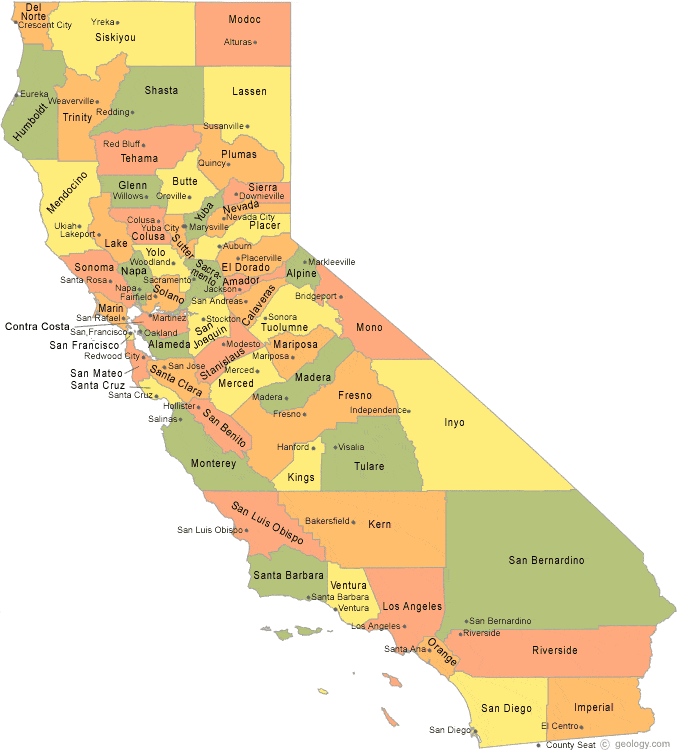How Many Counties Are in California? Complete 2025 Guide
How Many Counties Are in California? Complete 2025 Guide
Blog Article

Trying to find out how many counties are in California? You’re certainly not the only one. Be it for research, a road-trip map, or pub-quiz glory, the number 58 keeps popping up, yetthose two digits barely scratches the surface.
This network of counties makes upa tapestry of extremes: surf-washed beach cities, pine-covered mountain regions, vast agricultural heartlands, and global entertainment capitals. Every county has a chapter in the state’s saga, forged throughrailroad expansion, high-tech revolutions, and waves of cultural fusion.
Over the next few pages, we’ll explorethe timeline that locked the total at 58, what each county actually does for its residents, and the outliers that set fascinating records. Ultimately, you’ll own the knowledge—and map your next California adventure with confidence.
County-Making in Early California
Upon admission to the United States, the map was a patchwork of just 27 jurisdictions. An unprecedented population boom pushed officials to subdivide vast districts. By the end of the 1870s, the count had expanded toward over five dozen counties, and in 1907 the remaining gaps were closed, setting in stone the canonical figure of 5 8.
Capitol archives indicate that many break-away regions sprang out of a trio of factors:
- Geographic isolation turned routine business into week-long trips.
- Tax disputes between miners and farmers triggered secession campaigns.
- Cultural rivalries demanded tailored governance.
By 1920, the political map stabilised. In modern times, even bold secession schemes rarely get ballot traction, leaving historians to label the era when new counties sprouted decisively over.
From Kelp Forests to High Deserts: County Geography
Stretch a string from rugged Del Norte on the Oregon line to the date groves of Coachella, and you’ll cross a climatic kaleidoscope. Coastal counties soak up fog-cooled summers, while basin counties in the Central Valley bank on irrigation.
- Mountain counties such as Mono, Mariposa, and Calaveras receive winter snows.
- River-delta territories fight subsidence but export produce worldwide.
- Off-shore authorities like Ventura oversee ferry routes.
That geographic spread underpins the stark fiscal gaps between counties. Climate, after all, shapes crops and careers.
Behind the Scenes at the County Level
Amid Sacramento’s delegated framework, municipalities handle zoning, but counties are tasked with the bread-and-butter functions that keep daily life humming. From birth to death—vital records, coroner reports, property deeds—all sit at the registrar of voters.
Sheriff’s departments patrol towns too small for police forces, while county benches hear civil suits. Social-services bureaus coordinate Medi-Cal. Budget battles fill chamber galleries with activists.
Spotlight: Los Angeles County’s Scale
Contra Costa partners with nearby cities for animal control, illustrating how adaptable county structures can be. Uniformity would never work when budgets span five figures to double-digit billions.
Ultimately, county offices bridge Sacramento’s big laws and local reality. Knowing their role helps residents demand accountability.
Demographic and Fiscal Highlights
The state shelters over 39 million residents, but the headcount clusters unevenly. Los Angeles County alone packs nearly 25 %. On the flip side, high-elevation Alpine hovers around a thousand residents.
- Largest population: LA County
- Smallest by residents: County of Alpine
- Largest area: San Bernardino
- Smallest area: San Francisco
Fiscal bandwidth mirrors population spread. South Bay enclaves boast per-capita GDP rivaling small nations, while Central Valley breadbaskets depend on seasonal labour influxes. Such economic polarity informs legislative redistricting every decade.
Memorising these recordsis trivia gold: county metrics shape property taxes and commute times.
An Epic 58-County Road Trip
For intrepid travellers, visiting every single county is the new bucket-list click here quest. A popular itinerary kicks off in sunny San Diego, heads north along Highway 1, curves inland at Santa Cruz, then threads through the Central Valley’s orchard belt, before climbing into the Sierra Nevada for historic gold-rush hamlets.
Breaking the Trip Into Segments
- Coastal Kick-off – Border to wine country; 10 counties in three days.
- Crop-Belt Drive – Ventura to Sacramento; produce-market run.
- Lava Beds Detour – mountain lakes and volcano cones; jaw-dropping vistas.
Close the circuit in Imperial, after two thousand kilometres of asphalt. At that point, you can answer any road-trip quiz about county tallies—because your copyright stamps prove it!
California County FAQ
Wondering how the county system works? Start with these quick answers.
How many counties are in California?
State records confirm fifty-eight counties—no more, no fewer. Regardless of the source—be it Sacramento archives or federal census data: 58 in all.
Which county has the largest population in California?
LA County leads by a wide margin, hosting a population greater than that of many U.S. states. Decades of immigration, entertainment dominance, and job growth keep the numbers high.
Least populous California county?
Alpine County holds that distinction, rarely crossing the 1 200-resident mark. Its remote Sierra setting naturally restricts settlement, making it a haven for solitude seekers.
Largest county by land size?
San Bernardino County spans the most ground stretching more than 20 000 square miles. You can drive for hours without leaving its borders—crossing ski slopes, dunes, and bedroom communities.
Why does California have exactly 58 counties?
Gold-rush politics, rail expansion, and farmland disputes carved today’s boundaries, with the final adjustments ratified in 1907. Since then, proposals to add a 59th county have surfaced but never cleared the Legislature.
Could a region break away to become its own county today?
Legally, yes—state law allows it, yet practical barriers loom large. Petition drives, feasibility studies, dual-county referenda, and a two-thirds vote in Sacramento make secession rare. Hence, California has remained at 58 for generations.
Why are counties important to everyday life?
County governments deliver core public services: foster care, libraries, building permits, and superior courts. Remove counties from the equation, and civil society would struggle to operate.
Report this page